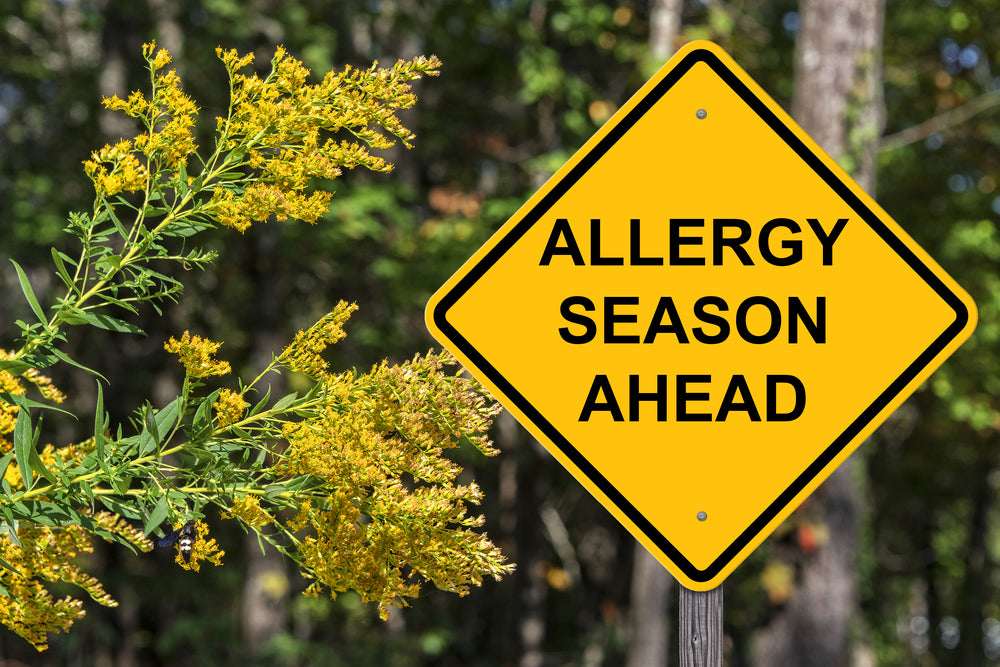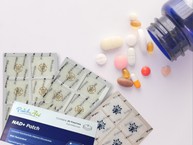Are you happy when spring comes, or do you struggle with allergies? Anyone who deals with seasonal allergies is deeply in tune with changes in the air quality, weather, and other aspects of the environment. An allergic response can make you focus more on how your body feels than anything else that is going on around you, and that can make you miss out on great parts of life. Still, you don’t have to be caught off guard. Here are some tips for dealing with seasonal allergies.
Remember to always check with your healthcare provider if you have concerns about your health, such as symptoms of seasonal allergies, and before using any dietary or nutritional supplement.
Background on Seasonal Allergies
Seasonal allergies can also be called hay fever or allergic rhinitis. They often come in spring or fall, and they can happen in response to particles, such as pollen, that can be in the air. You may have symptoms such as a runny nose, wheezing, sneezing, and watery, red, and itchy eyes. These symptoms can drag you down, but there are some ways to try to deal with them.
Tips
Check pollen counts.
Pollen counts are available from a variety of sources. You can check for counts in your zip code, area, or city in places such as weather-related websites, government sites, or local news channels or stations. If the pollen count is high on a given day, you might want to stay inside as much as possible.
Check the weather.
Dry and windy conditions are the most likely conditions to stir up pollen into the air. If you want to exercise outdoors, try to do it after a rainstorm, when the air may be clearer.
Avoid early mornings.
The early bird may get the worm, but early birds may get allergens, too. The air may be clearer later in the day. You might also consider closing your windows at night, when pollen counts can be higher.
Go artificial.
To avoid too much pollen on your own property, you might consider artificial substitutes. For example, artificial turf is a groundcover that’s popular in drought-prone regions, but it can also be helpful for people who are allergic to grass. Similarly, decorating the inside of your home with artificial flowers instead of real ones can reduce your exposure to pollen.
Be mindful when doing chores.
Outdoor chores, such as mowing the lawn, clearing branches and leaves, and weeding, and planting in the garden, can all lead to pollen exposure. If possible, avoid these chores and leave them to someone else, or wear a face covering to protect your nose and mouth from dust and other potential allergens.
Keep pollen outside.
When you’re done with yard work, remove your clothes as soon as possible and take a shower. That way, you can prevent pollen from getting from your clothes onto your furniture. Be sure to wash your hair to keep pollen from getting around your home, too.
Use HEPA filter products.
Use a HEPA filter in your home, including in your bedroom and anywhere else you spend significant amounts of time. A HEPA filter vacuum cleaner can keep your floors free from pollen. In addition, you might want to use a dehumidifier if the air indoors is dry.
Try a vitamin patch.
Vitamin patches are easy to use, and can contain a wide range of ingredients to target various systems. In the case of seasonal allergies, support for the immune system is key. It’s also important to reduce inflammation and fight harmful oxidative reactions.
The PatchAid Allergy Plus Vitamin Patch has ingredients that have long been used as antihistamines. Histamines are naturally present in your body, and are involved in sleep-wake cycles, digestion, and blood pressure regulation. When they go haywire, though, they can cause common symptoms of seasonal allergies, such as watery eyes and a runny nose. Antihistamines in the Allergy Plus Vitamin Patch by PathAid include bromelain, quercetin, and stinging nettle.
This patch also has vitamin C. It’s not only needed for normal immune function and prevention of an overreaction such as in the case of seasonal allergies, but is also an antioxidant. Ginger is another anti-inflammatory component in the Allergy Plus Vitamin Patch. Ginger, peppermint oil, and holy basil are also in this patch.
With a vitamin patch, there are no concerns about an upset stomach due to nutrient absorption. The patch is hypoallergenic and free from sugar and gluten. Plus, you can use multiple patches at a time, provided your doctor approves.
Try over-the-counter remedies.
Ask your healthcare provider or pharmacist about options for over-the-counter, non-prescription medications. Antihistamines, for example, may reduce symptoms such as sneezing, a runny nose, and watery eyes. Nasal sprays and oral decongestants are also commonly used for seasonal allergies.
Testing for allergens.
If you can’t figure out exactly what is triggering your symptoms, you might continue to have trouble due to not knowing exactly which potential allergens to avoid. If you’re having symptoms and don’t know what’s causing them, your healthcare provider may suggest allergen testing. Skin or blood tests may help you identify the allergens that are bugging you.
Ask about allergen immunotherapy.
Once you’ve tried other options, your healthcare provider might want to discuss allergen immunotherapy with you. This involves desensitizing your immune system by exposing you to tiny, but progressively larger, amounts of the trigger. You might get the exposure via injection, or it could be via sublingual tables.
Seasonal allergies are no fun, but there’s a lot you can do to prepare. Along with checking pollen counts and trying to stay away from high levels of your own triggers, you can try over-the-counter remedies. The PatchAid Allergy Plus Vitamin Patch has herbal and other ingredients, and it’s an easy way to help enable you to focus on life, not symptoms of allergies.*
*The Food and Drug Administration has not evaluated these statements. PatchAid products are not intended to diagnose, treat, cure or prevent any disease. Anyone with a medical condition should seek the advice of a licensed medical practitioner. Individual results may vary.







